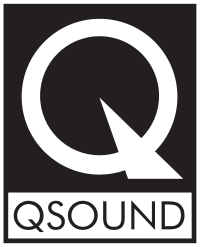Difference between revisions of "QSound"
From Sega Retro
| Line 60: | Line 60: | ||
*''[[Pen Pen TriIceLon]]'' | *''[[Pen Pen TriIceLon]]'' | ||
*''[[Plasma Sword: Nightmare of Bilstein]]'' | *''[[Plasma Sword: Nightmare of Bilstein]]'' | ||
| + | *''[[Project Justice]]'' | ||
*''[[Skies of Arcadia]]'' | *''[[Skies of Arcadia]]'' | ||
*''[[Sonic Adventure]]'' | *''[[Sonic Adventure]]'' | ||
| + | *''[[Street Fighter III: 3rd Strike]]'' | ||
| + | *''[[Street Fighter III: Double Impact]]'' | ||
*''[[Street Fighter Alpha 3]]'' | *''[[Street Fighter Alpha 3]]'' | ||
*''[[Super Puzzle Fighter II X for Matching Service]]'' | *''[[Super Puzzle Fighter II X for Matching Service]]'' | ||
| + | *''[[Super Runabout: San Francisco Edition]]'' | ||
*''[[Super Street Fighter II X for Matching Service]]'' | *''[[Super Street Fighter II X for Matching Service]]'' | ||
| − | }} | + | *''[[Tech Romancer]]'' |
| + | *''[[Vampire Chronicle for Matching Service]]'' | ||
| + | |cols=3}} | ||
==References== | ==References== | ||
Revision as of 15:33, 21 October 2016
This teeny-tiny article needs some work. You can help us by expanding it.
QSound is the original name for a three-dimensional audio technology created by QSound Labs. Following the release of a second revision, the technology is often referred to as Q1.
QSound "widens" the range of stereo sound, and so is best used with a pair of stereo speakers spaced apart from the television. For video games, the benefits were more significant in arcade environments, where speakers would be mounted to arcade cabinets in the correct position to ensure the best quality audio, though if positioned properly, similar effects can be achieved in the home.
While primarily backed by Capcom, which held a stake in the technology and used it in all of its CPS2 arcade boards, Sega began using the technology in 1993 for its Sega Mega-CD game library[1], starting with Ecco the Dolphin[2], before signing a deal to incorporate it in Sega 32X and Sega Saturn games[3]. QSound-enabled games were still in production as late as the Sega Dreamcast, though by the turn of the century, the technology had largely been abandoned.
Nintendo used a competing system, Dolby Surround, in many of its SNES games around this period, however this requires audio equipment with a Dolby Surround decoder and is only fully realised by a set of speakers placed behind the user (i.e. it is "surround" sound, whereas QSound is just an enhanced form of stereo). Both technologies have been superseded by more advanced surround sound setups.
Games utilising QSound
Mega-CD
- The Amazing Spider-Man vs. The Kingpin
- Ecco the Dolphin
- Ecco: The Tides of Time
- Eternal Champions: Challenge From the Dark Side
- Jurassic Park
- Sonic the Hedgehog CD
- The Terminator
32X
Saturn
- Arthur to Astaroth no Nazomakaimura: Incredible Toons
- Cyberbots: FullMetal Madness
- Dungeons & Dragons Collection
- Ide Yousuke Meijin no Shin Jissen Mahjong
- Madden NFL 97
- Marvel Super Heroes
- Marvel Super Heroes vs. Street Fighter
- Mega Man X3
- NiGHTS into Dreams
- Night Warriors: Darkstalkers' Revenge
- Pocket Fighter
- Sega Rally Championship
- Sonic R
- Street Fighter Alpha
- Street Fighter Collection
- Street Fighter II Movie
- Street Fighter: The Movie
- Street Fighter Zero 3
- Super Puzzle Fighter II Turbo
- Tenchi wo Kurau II: Sekiheki no Tatakai
- Vampire Savior: The Lord of Vampire
- X-Men: Children of the Atom
- X-Men vs. Street Fighter
Dreamcast
- Capcom vs. SNK: Millennium Fight 2000
- D-2
- Giga Wing
- Marvel vs. Capcom: Clash of Super Heroes
- Marvel vs. Capcom 2: New Age of Heroes
- Mr. Driller
- Pen Pen TriIceLon
- Plasma Sword: Nightmare of Bilstein
- Project Justice
- Skies of Arcadia
- Sonic Adventure
- Street Fighter III: 3rd Strike
- Street Fighter III: Double Impact
- Street Fighter Alpha 3
- Super Puzzle Fighter II X for Matching Service
- Super Runabout: San Francisco Edition
- Super Street Fighter II X for Matching Service
- Tech Romancer
- Vampire Chronicle for Matching Service
